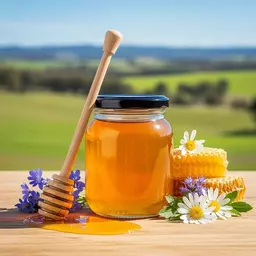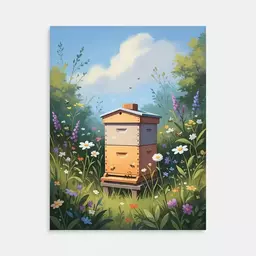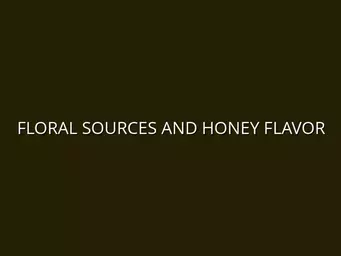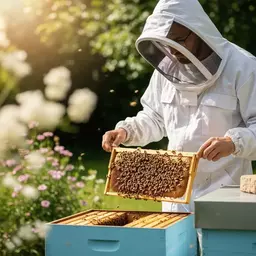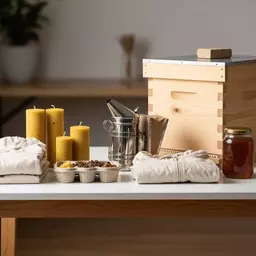Beginner's Guide to Honey Bees
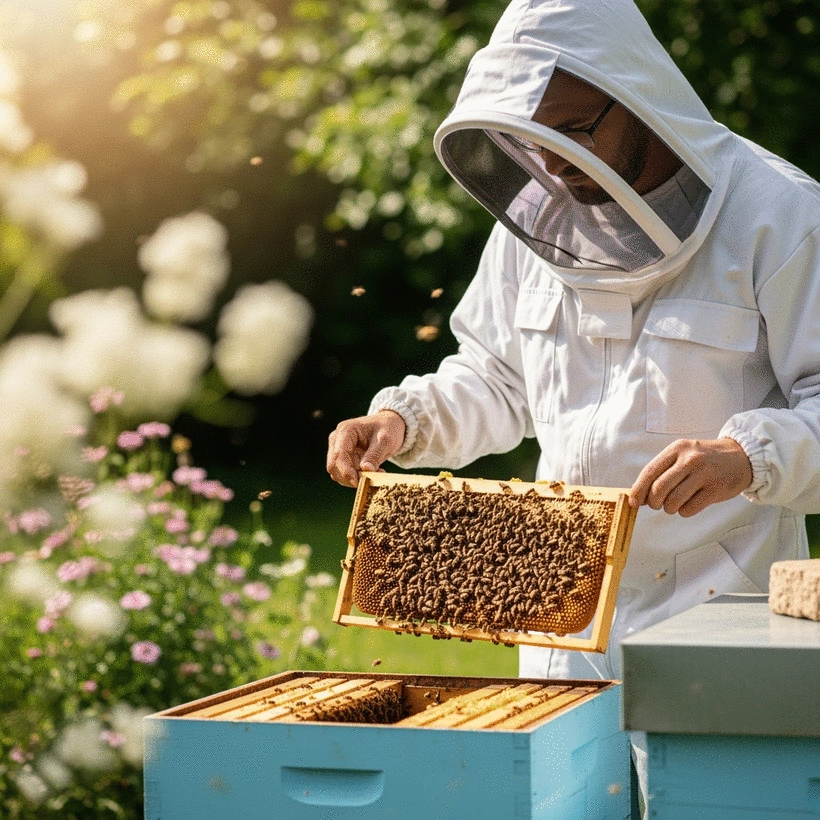
Did you know that honey bees contribute to one-third of the food we consume by pollinating our crops? Understanding their biology and behavior not only enriches your beekeeping experience but also highlights the critical role they play in our ecosystem.
What You Will Learn
- The hive consists of three main types of bees: the queen, worker bees, and drones, each with specific roles that maintain colony health.
- Brood development is crucial for hive productivity; monitoring it can help identify potential issues before they escalate.
- Honey bees undergo a four-stage lifecycle—egg, larva, pupa, and adult—which is vital for maintaining a robust bee population.
- Worker bees communicate via dances, like the waggle dance, to inform others about food sources, illustrating complex hive dynamics.
- Honey bees are essential for pollination, impacting food diversity and ecosystem health, making their conservation crucial.
- Sustainable beekeeping practices, such as organic methods and habitat conservation, enhance both hive health and environmental well-being.
- Technological advancements in beekeeping, such as automated monitoring systems, empower beekeepers to improve hive management significantly.
- Understanding the environmental impact of beekeeping can help minimize negative effects on local ecosystems and promote biodiversity.
- Organic beekeeping principles prioritize natural methods, contributing to healthier bees and more sustainable honey production.
The Foundation of a Healthy Hive: Roles and Lifecycle of Honey Bees
Delve into the core structure and development of a honey bee colony, highlighting the distinct responsibilities within the hive and the essential stages of a bee's life.
Hive Roles Explained
Queen Bee
Lays eggs, maintains cohesion.
Worker Bees
Forage, care for brood, maintain hive.
Drones
Mate with queen (males).
Honey Bee Lifecycle Stages
1. Egg
Laid by queen, hatches in 3 days.
2. Larva
Fed by workers, develops in 6 days.
3. Pupa
Metamorphosis into adult bee.
4. Adult
Emerges after ~21 days, contributes to hive.
Understanding Honey Bees: The Core of Beekeeping Basics
As I dive into the world of honey bees, it’s essential to start with their biology. Understanding the roles within the hive sets the foundation for effective beekeeping. Each bee serves a unique purpose, contributing to the overall health and productivity of the colony. By grasping these roles, you can better appreciate the intricate dynamics at play in your apiary.
The hive is primarily composed of three types of bees: the queen, worker bees, and drones. The queen is the heart of the hive, responsible for reproduction, while the workers take on various tasks such as foraging, nursing, and hive maintenance. Drones, on the other hand, have a singular role—to mate with a queen. It’s fascinating how these roles interconnect and support the hive’s success! For more insights into managing bee health, consider resources like the Honey Bee Pest and Disease Guide.
Grasping Bee Biology: The Roles of the Queen, Workers, and Drones
Let’s explore each bee’s responsibilities in greater detail. Understanding these roles is crucial for any aspiring beekeeper. Here’s a quick breakdown:
- Queen Bee: Lays thousands of eggs daily and secretes pheromones to maintain colony cohesion.
- Worker Bees: Perform various jobs like foraging for nectar and pollen, caring for the brood, and maintaining the hive.
- Drones: Males that exist solely to mate with a queen during the mating season.
Recognizing these roles helps you appreciate the hive's structure and guides you in managing your bees effectively. As you observe your hive, you’ll notice how each bee contributes to the colony’s health and productivity. For further reading on bee species and their behaviors, the Penn State Extension Beekeeping resources offer valuable information.
Exploring the Importance of Brood Development
Brood development is vital for maintaining a healthy hive. The queen’s ability to lay eggs ensures a steady population of bees to support the colony. Healthy brood development directly influences honey production and hive resilience. Without a robust brood, the hive struggles to thrive, especially in challenging conditions.
As a beekeeper, monitoring brood patterns can provide insights into your hive's health. If you notice irregularities, it may indicate issues that need addressing, such as disease or inadequate nutrition. Keeping a close eye on this aspect can help you ensure a flourishing bee colony!
The Lifecycle of Honey Bees: What Every Beginner Should Know
Understanding the lifecycle of honey bees is a key aspect of successful beekeeping. It consists of four main stages: egg, larva, pupa, and adult. Each stage plays a crucial role in the development of healthy bees:
- Egg: Laid by the queen, these tiny eggs hatch into larvae within three days.
- Larva: Fed by worker bees, larvae develop into pupae in about six days.
- Pupa: During this stage, the bee undergoes metamorphosis, transforming into an adult.
- Adult: After about 21 days, the fully formed bee emerges ready to contribute to the hive.
This lifecycle highlights the importance of consistent care and management practices. Ensuring optimal conditions for each stage contributes to the overall health and productivity of your hive.
Honey Bee Behavior: Understanding How Bees Communicate and Forage
One of the most intriguing aspects of honey bees is their behavior, particularly their communication methods. Worker bees communicate through dances, which convey information about food sources. The most famous of these is the waggle dance, where the bee performs a series of movements to indicate the direction and distance of nectar or pollen sources.
Additionally, bees have an impressive ability to forage efficiently. They communicate their findings to other workers, ensuring that food sources are maximized. Observing this behavior can enhance your understanding of hive dynamics and help you manage foraging efforts effectively!
The Significance of Pollination: Why Honey Bees Matter
The importance of honey bees extends beyond honey production. They play a crucial role in pollination, which is vital for our food systems. Pollination by honey bees affects about one-third of the foods we consume, including fruits, vegetables, and nuts. Without them, our diets would be significantly less diverse!
Supporting honey bee populations is essential for maintaining biodiversity and health in our ecosystems. As beekeepers, we have a vital role in protecting these pollinators and ensuring they continue to thrive. By fostering local bee populations, we contribute to a sustainable future for our environment and ourselves.
Interactive Poll: Your Beekeeping Journey
As you explore the world of beekeeping, we'd love to hear about your experiences! Which aspect of beekeeping are you most excited to learn about or improve? Share your thoughts below:
Frequently Asked Questions About Honey Bees and Beekeeping
Embracing Sustainable Practices in Beekeeping
As a passionate apiarist, I believe that sustainability is at the heart of beekeeping. It's essential not only for the health of our honey bees but also for the environment. By incorporating sustainable practices into our beekeeping routines, we can nurture our hives while supporting broader ecological health. Let’s dive into innovative practices that ensure we are doing our part for these vital pollinators! For more general guidance, beginners can refer to resources like Beekeeping for Beginners.
- Utilizing organic methods to manage pests
- Creating habitats that promote biodiversity
- Participating in local conservation efforts
- Using renewable resources for hive management
By adopting such practices, we can not only improve the health of our bees but also contribute to a thriving ecosystem. Remember, every step we take towards sustainability matters, and together we can make a significant difference!
Innovations in Beekeeping: Technological Advancements for 2025
The beekeeping landscape is rapidly evolving, thanks to technological advancements. From smart hives equipped with sensors to mobile apps that track hive health, the tools available today empower beekeepers to manage their colonies more effectively. These innovations serve not only to improve hive productivity but also to enhance bee welfare.
- Automated hive monitoring systems
- Mobile apps for tracking hive conditions
- Data analysis tools for better hive management
- Innovative pest management solutions
Embracing these technologies allows us to be more informed and proactive in our beekeeping practices. It’s exciting to think about how they can help us protect our bees and ensure their vitality for years to come!
Understanding the Environmental Impact of Beekeeping
Beekeeping, while beneficial, does come with its responsibilities. Understanding our environmental impact is crucial. We must consider how our practices affect local ecosystems and work to minimize negative effects. This means being aware of the land around our hives and making informed decisions that promote harmony.
- Assessing the impact of hive placement on local flora and fauna
- Choosing bee-friendly plants for foraging
- Practicing responsible pesticide use
- Engaging in habitat restoration efforts
By taking these steps, we contribute to a healthier environment not just for our bees but for all creatures that share it. Together, we have the power to create a positive change in our ecosystems!
Organic Beekeeping: Principles and Practices for Sustainability
Organic beekeeping is a wonderful way to foster sustainability while ensuring our bees thrive. This approach emphasizes natural methods and minimizes synthetic inputs. By adopting organic practices, we can ensure that our honey is pure and that our bees are cared for in the best way possible.
- Using organic treatments for pests and diseases
- Implementing natural foraging strategies
- Ensuring that hive materials are chemical-free
- Prioritizing biodiversity through diverse plantings
For those of us at Nectar Network, fostering a community of organic beekeepers can help drive the movement towards sustainable practices. Every beekeeper can make a difference, and organic methods are a fantastic way to start!
Recap of Key Points
Here is a quick recap of the important points discussed in the article:
- Understanding honey bee biology is crucial for effective beekeeping, with distinct roles for the queen, worker bees, and drones.
- Healthy brood development is essential for hive productivity and resilience, directly impacting honey production.
- The honey bee lifecycle consists of four stages: egg, larva, pupa, and adult, each requiring proper care and management.
- Bees communicate through dances, like the waggle dance, which helps them forage efficiently.
- Honey bees play a vital role in pollination, affecting a significant portion of our food supply.
- Sustainable practices, such as organic pest management and habitat creation, are critical for healthy bee populations and ecosystems.
- Innovations in beekeeping technology can enhance hive management and bee welfare.
- Understanding the environmental impact of beekeeping is essential for promoting ecological harmony.
- Organic beekeeping methods foster sustainability and ensure the well-being of honey bees.
